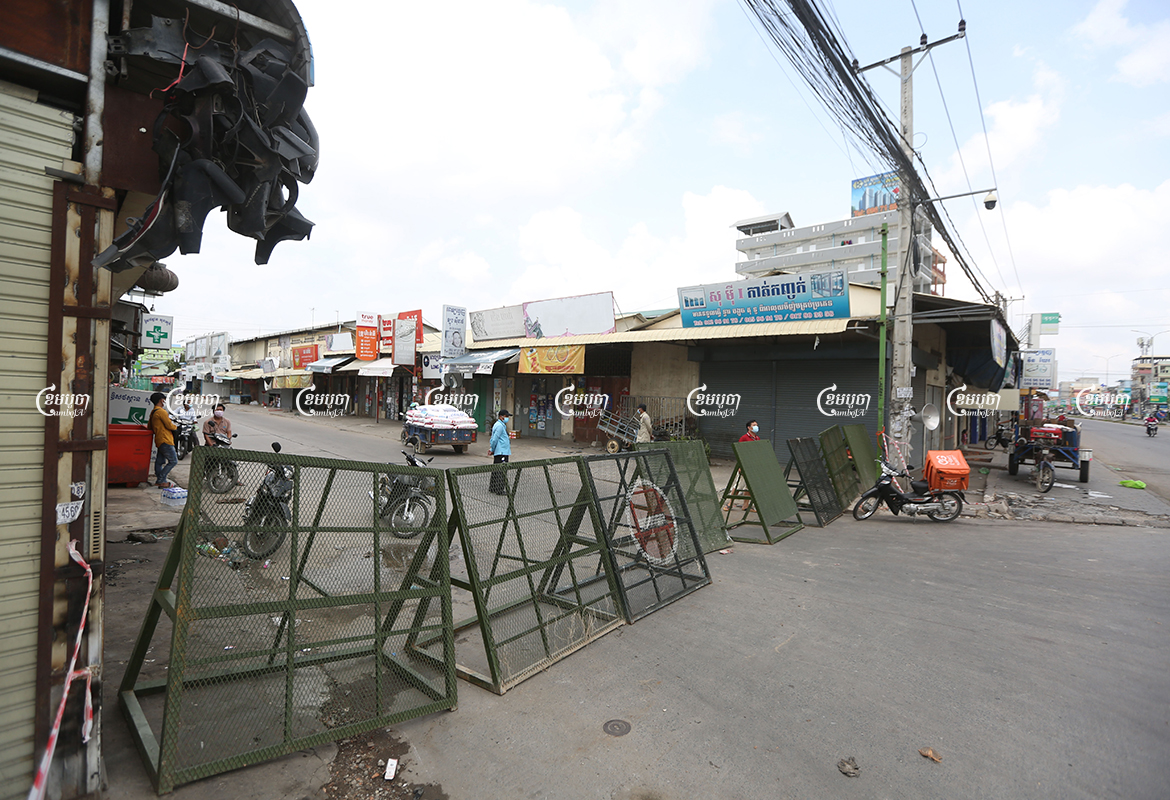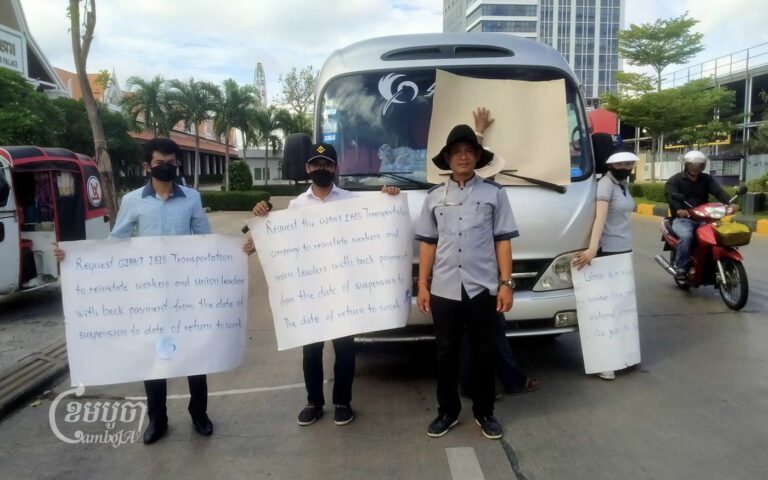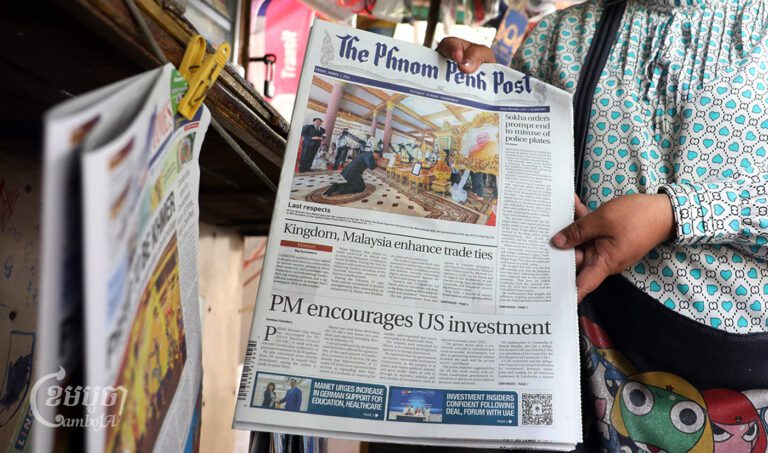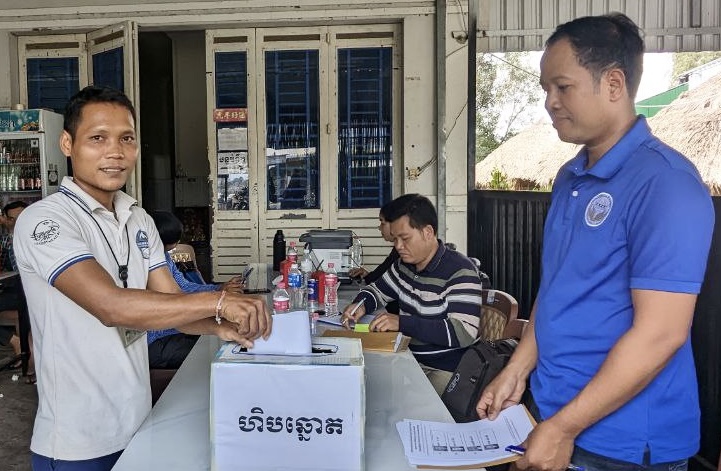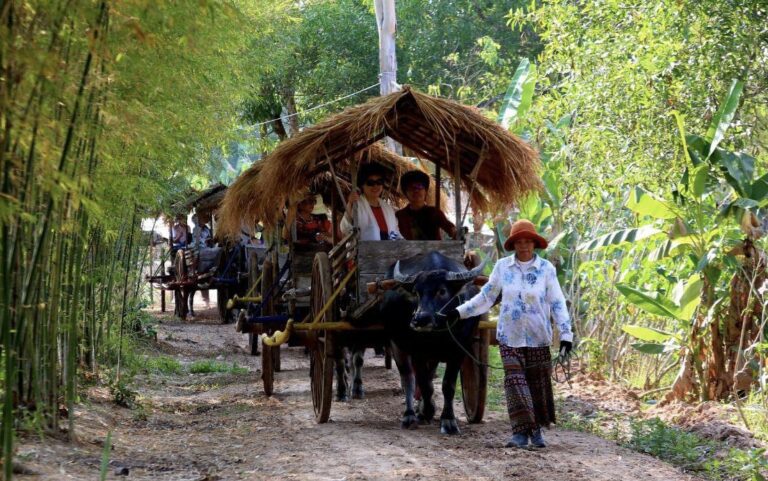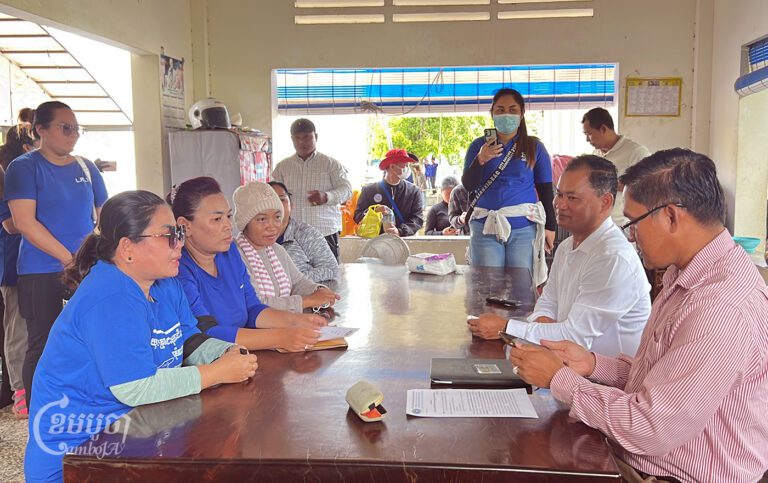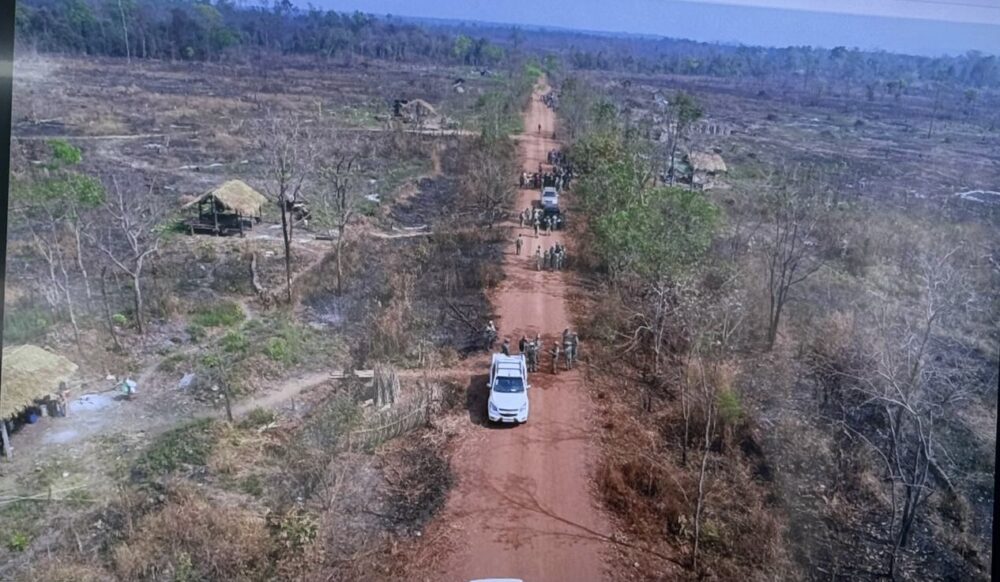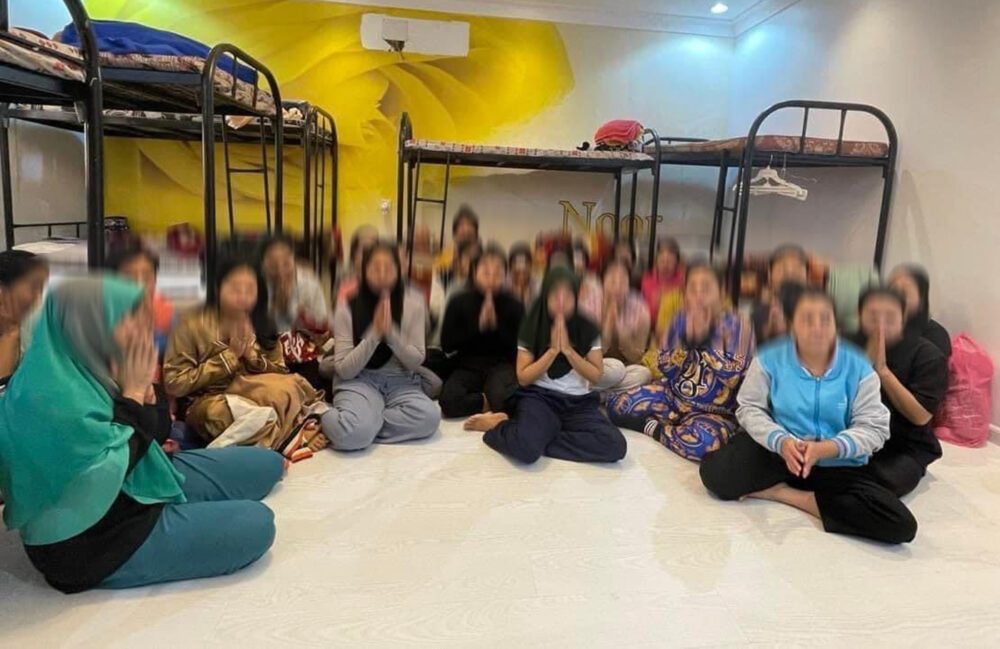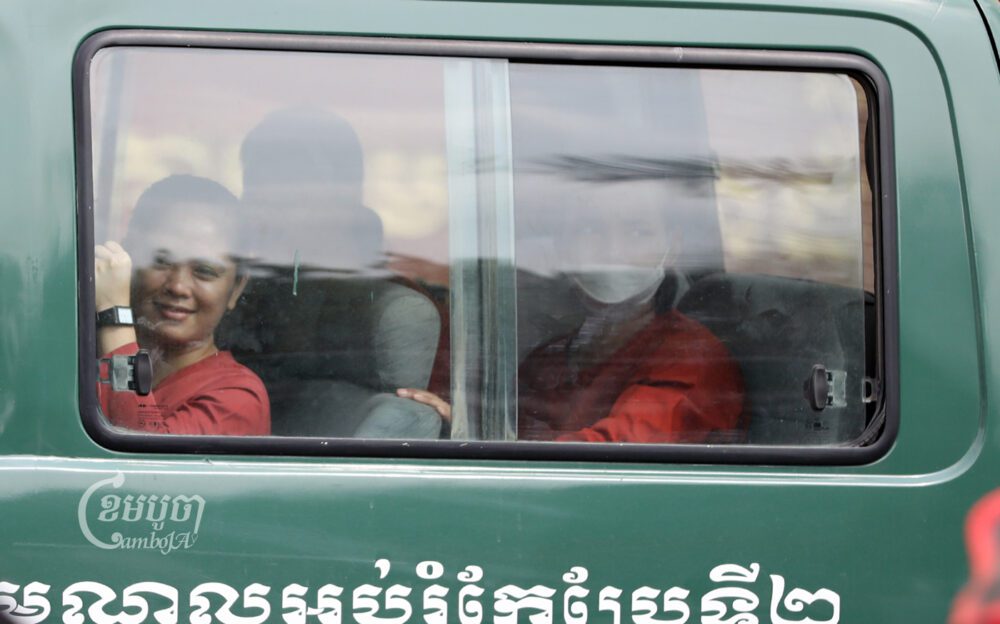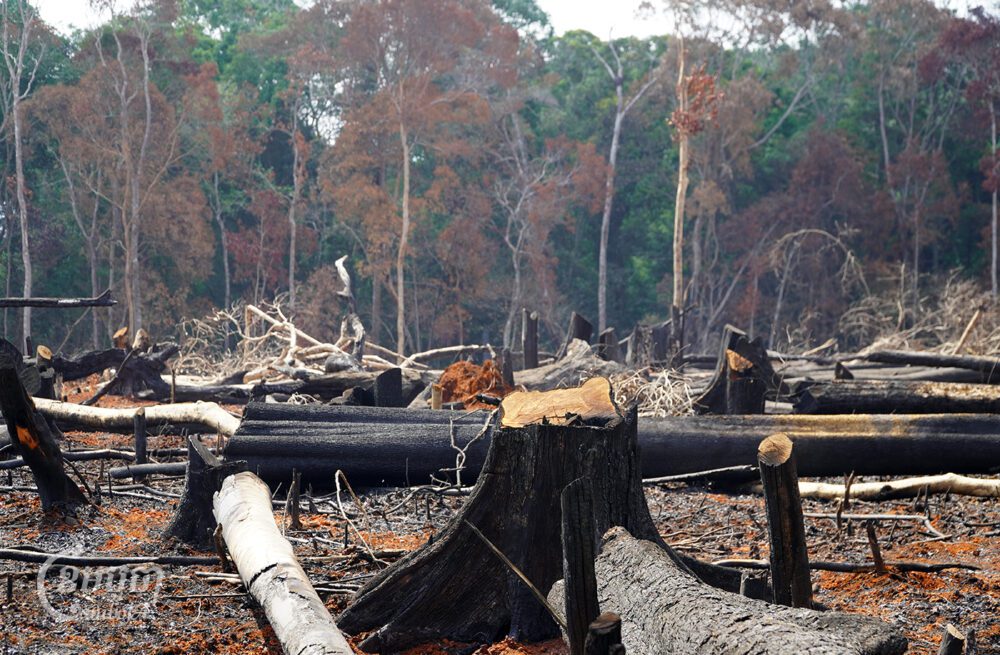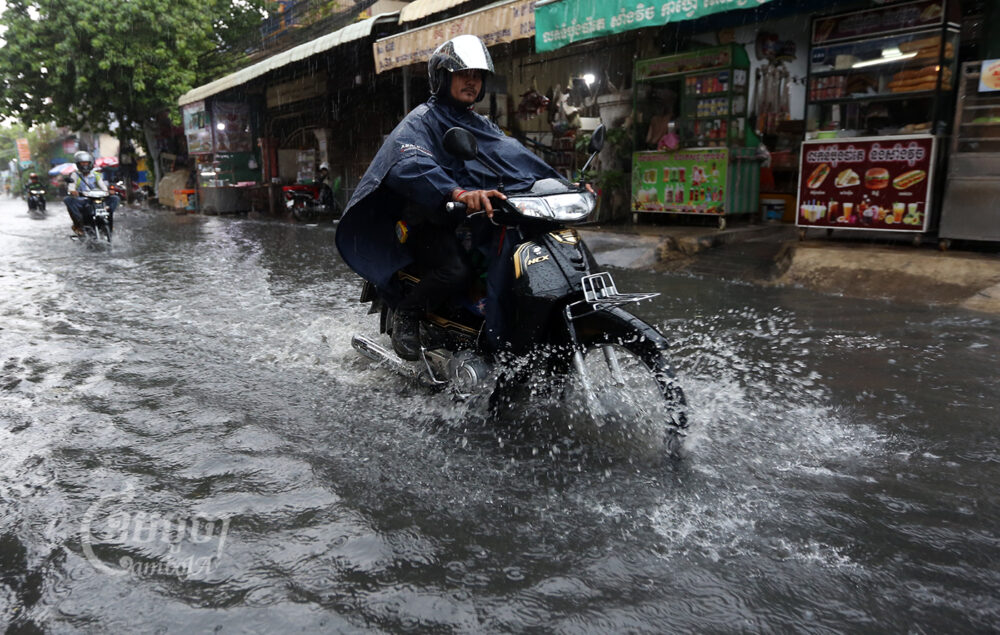With Phnom Penh’s citywide lockdown set to end today, the Ministry of Labor announced new COVID-19 regulations for factories — including that they must split their workforce into two groups, to trade off every two weeks.
On Wednesday evening, meanwhile, Phnom Penh City Hall issued an updated map, designating most of the city as yellow zones that were safe to fully reopen. Those living in red zones and dark yellow zones in some areas of 11 communes in Prampi Makara, Tuol Kork, Meanchey, Russei Keo, Pur Senchey, and Chbar Ampov districts will still face lockdown restrictions.
On Tuesday, unionists, industry representatives, and Labor Ministry officials met to discuss hygiene, occupational safety, and health as most of Phnom Penh’s factories set to resume operations.
According to a Labor Ministry statement outlining the new guidelines, factories can only employ 50 percent of their workers at a time; with their employee pool divided into two and ordered to swap every two weeks. Those in the first week shift must have received at least one dose of the COVID-19 vaccination, or they must live in an area that doesn’t require a COVID-19 test, or they must have proof of a negative COVID-19 test.
The factory must “provide 50 percent of the minimum wage plus seniority bonus and other monthly bonuses that workers /employees have received so far, maintaining monthly benefits and other benefits such as overtime of 2 hours per day and overtime on Sunday of workers/employees,” it said.
But it is unclear how stringently those guidelines will be enforced. The statement said that the half-time shifts would be required for any factories where less than 80 percent of their workforce wasn’t fully vaccinated. But it also said that factories could be exempt if they have “strict health and safety measures in protecting their workers/employees for COVID-19 and obtain permission from the labor inspectors.”
The factory must instruct workers to wear masks regularly in the workplace and clean their hands and body, and take temperatures before entering the factory, the statement said. Employers were also urged to put barriers in place between workers and keep workers socially distanced.
The statement added that the working group urged the government to prioritize the vaccination of “workers/employees, especially factory workers/employees, worker/employee drivers and tuk-tuk drivers, those who stay in rental house areas, [and] vendors around the factory,” it said.
A number of garment factories located in Phnom Penh’s yellow zones opened last week.
At about 6:30 am on Wednesday, several security guards could be seen at Callisto Apparel (Cambodia) Co., Ltd, located in Prek Pnov district’s Kork Roka commune, standing at the factory gates to scan workers’ temperature and spray their hands with sanitizer.
Garment worker Kim Chea, 38, said that the factory had reopened on April 29 and had thus far done a good job to keep workers socially distanced.
“The factory arranged seats so we can work more than one meter apart from each other,” Chea said. “I think that this factory has good sanitation for workers.”
But in spite of these measures, which included dividing workers into two shifts, she said, she was still worried about the reopening given the high rates of infection.
“I am still concerned about getting infected but I have no choice, if I do not come to work, I will not get money to support my family,” she said.
A day before many factories were set to reopen, meanwhile, workers said they had not yet been told crucial details about their return.
“I do not know yet whether they will separate workers as two shifts or not,” said Koeng Chanphally, 31, who works at Laurelton Diamonds (Cambodia) Co., Ltd.
The factory, located in Phnom Penh Special Economic Zone in Phnom Penh’s Kambol district, had suspended operations on April 10 and was set to reopen Thursday.
During that time, said Chanphally, she had not received any aid from the government.
“Sometimes I met with a food shortage and I asked my parents to send some money to buy food,” she said.
Heng Sour, Labor Ministry’s spokesman said he did not know how many workers would be returning to factories on Thursday, given that residents of red zones and dark yellow zones must remain at home when the lockdown lifts. But with those zones severely shrunk, it is likely to be a large number. At a press conference last week he estimated that 200,000 workers would return when factories in the yellow zone began reopening.
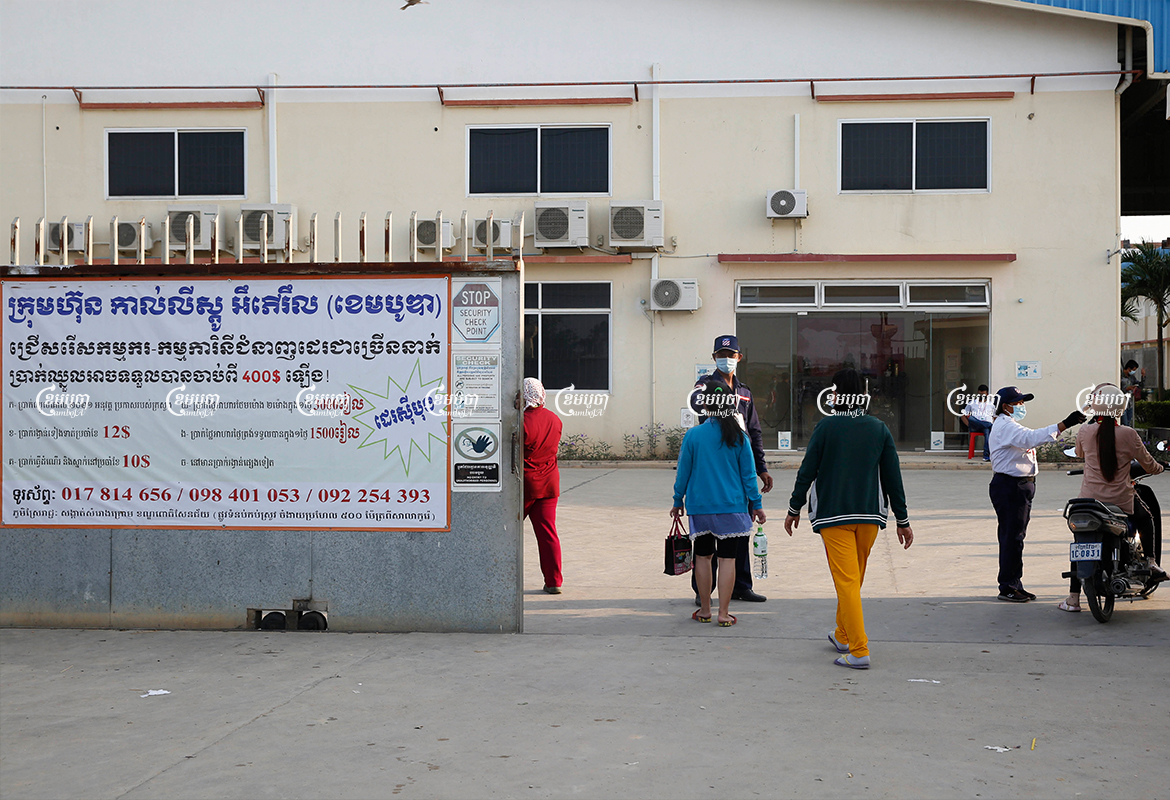
Ath Thorn, president of Cambodian Labor Confederation (CLC), who joined the Tuesday meeting said the majority of factories would reopen Thursday.
“I just knew that there are some factories already reopened but most factories will reopen after the government finishes the lockdown in Phnom Penh and Takhmao City on May 6,” Thorn said.
Thorn added that labor unions were encouraging workers to travel by motorbike and bicycle, in order to reduce crowding on the tightly packed trucks that garment workers are forced to use for their commutes.
He said he hoped that as long as factories follow the health and safety measures reached at the meeting, they can help prevent an outbreak of COVID-19, particularly by following the divided shift scheme. But he said that given the high rates of COVID-19, he remained concerned.
“We think that it cannot protect against it because on Tuesday, there were nearly 1,000 people who were infected,” Thorn said. “We are concerned that when the patients increase a lot, they cannot find space to rest for treatment, so they are treated at home or schools where they are not receiving [the best] treatment.”
During the lockdown, meanwhile, workers had been suffering without enough food, money, or medical care.
“The government should provide some budget while workers have been locked down or they have been quarantining,” Thorn said, adding that it was critical that factories be shut down if cases are detected — even if just a small number.
Yang Sophorn, president of Cambodian Alliance of Trade Union (CATU), said she will request the government to monitor factories strictly in order to ensure they have followed the new guidelines.
“If they do not follow the Health Ministry’s instructions, it will be easy for workers to become infected and when they are infected, we will have severe difficulty in the future,” she said.
She said the government should inspect everything from transportation trucks to factory floors to ensure workers were able to stay socially distant and that sanitation and masking measures were in place.
“The government has to use inspection officials to observe whether those factories respect the law, and if they do not [they must decide] whether to fine them,” said Sophorn.
She said while the government, along with civil society and unions, has been distributing food to needy workers, many of them still had yet to receive support.
On a voice message posted to his Facebook page Wednesday, Prime Minister Hun Sen said the plan to vaccinate those living in red zones, which began May 1, had been going smoothly and that more than 1.5 million people nationwide have been vaccinated.
“In the past [week], the government sent 900,000 doses of vaccines to armed forces to vaccinate the people in red zones,” Hun Sen said, adding that a total of 520,000 people lived in the red zone areas. He said another 500,000 doses would arrive May 11 and another 500,000 on May 15.
“The red zone is the zone which has the highest risk and they were locked down there and met with difficulty, so they need to receive the benefit [of vaccination] first,” he said.
He added that the red zone areas in Russei Keo district would begin receiving doses after the next batch arrived May 11 and that health workers had begun preparing for the mass vaccination campaign. Doctors would go door to door to vaccinate the elderly and disabled, if they were unable to leave their homes, he added.
“Please do not forget monks, please invite monks to vaccinate too,” Hun Sen said.
More than 1,500 new cases of COVID-19 were recorded on Tuesday and Wednesday, the Health Ministry said. As of Wednesday 110 people have died of COVID-19 — all from the latest outbreak. Health officials have recorded 16,416 new infections since the February 20 community event, with a total overall case count of 16,971 cases since the start of the pandemic in early 2020.


